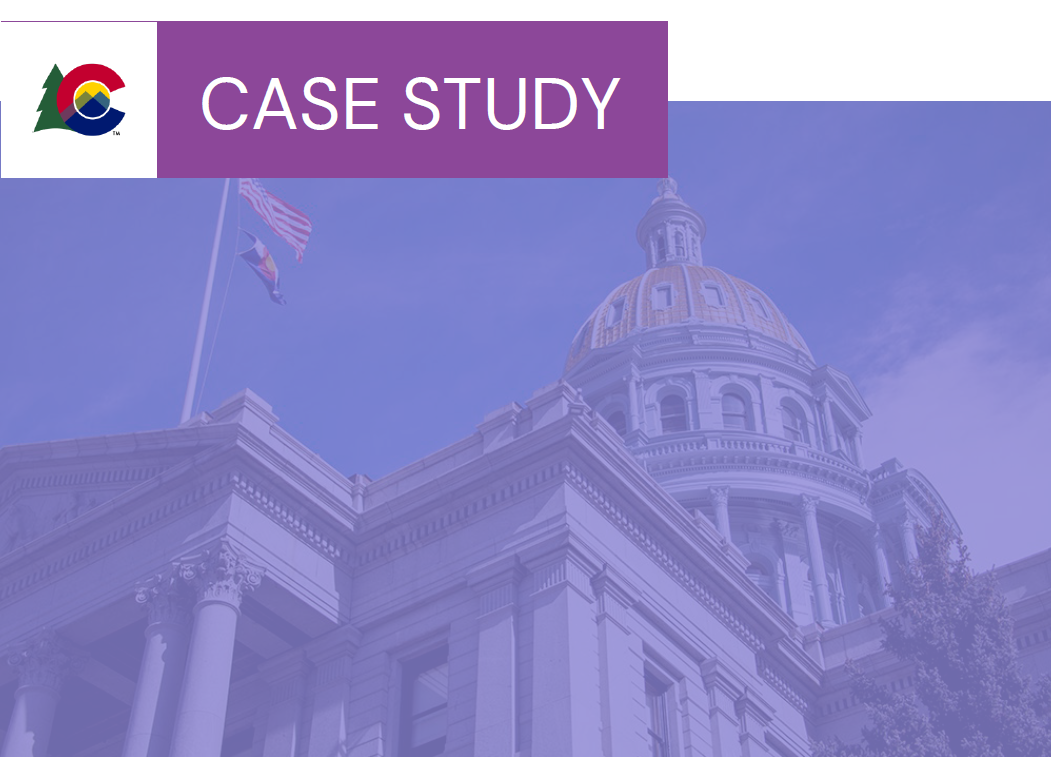Introduction
The significant growing frustration and discontent with public health interventions and the pandemic response has contributed to ongoing threats against public health officials and facilities. State health officials have been targeted, disparaged, and vilified by residents. Governor Newsom of California remarked that health officials in his state have been “getting attacked, getting death threats; they’re being demeaned and demoralized.” Some of these behaviors have intensified from online comments into protests, stalking and other illegal acts of harassment. Several state and local health officials have resigned their positions due to the personal attacks: Governor DeWine’s chief health advisor left her post after armed residents protested at her home using anti-Semitic and sexist rhetoric (Dr. Amy Acton is Jewish). At the beginning of the COVID-19 pandemic, Dr. Anthony Fauci, Director of the National Institute of Allergy and Infectious Diseases, National Institutes of Health, had his security detail enhanced due to credible threats, and it was recently expanded again to provide protection for his family. In April, at the Port of Los Angeles, Eduardo Moreno attempted to attack the U.S. Navy hospital ship Mercy by deliberately derailing a train near it. The incident was investigated by the FBI’s Joint Terrorism Task Force and, while no one was injured, it exemplifies the escalation in threats to public health assets.
While all governors want to create space for public discourse and disagreement, they also seek to protect and support the people and places crucial to the current COVID-19 pandemic response and future public health responses. Doing so may require governors to use, at their discretion, their executive, administrative, and regulatory powers to mitigate motivations to violence, strengthen the social fabric, and coordinate protection activities.
This memorandum provides:
- I. Actions for Governors to Protect Public Health Personnel and Assets
- II. Overview of Key Strategies for Preventing Targeted Violence
- o Coordinate Protection Activities to Address Immediate Threats
- o Buy Down Long-term Risk by Mitigating Motivations to Violence and Strengthening the Social Fabric
- III. Conclusion
I. Actions for Governors to Protect Public Health Personnel and Assets
The response to COVID-19 requires dedicated and ongoing action by public health personnel across the nation. Personnel at all levels of the response have experienced threats, from frontline workers such as contact tracers, community health care workers, and law enforcement officers, to policymakers, including state health officials. In addition, the response has required the mobilization of physical resources from a number of sectors, including public health, health care, and emergency response. Critical facilities, such as mobile clinics, drive-through testing sites, laboratories, and hospitals are potential targets. In March, a man who was planning to bomb a Missouri hospital was killed during an attempted arrest, and in Colorado, local public health office buildings have been defaced with obscene graffiti. Governors can provide for the security and protection of critical public health personnel and assets by:
Publicly supporting public health officials and modeling civil discourse. De-escalating violent rhetoric is incredibly important- in the health care field, verbal assault is considered a risk factor for future battery and other physical violence. Government officials, both elected and appointed, can demonstrate civil disagreement and set a tone for policy discourse, rather than personal attacks. Governors can also help humanize public health officials and help the public empathize with the difficult decisions that must be made. Governors can encourage their staff, as well as the public, to avoid “shooting the messenger.”
- In Pennsylvania, in response to a defamatory social media post, Governor Tom Wolf issued a strong statement of support for his Secretary of Health Rachel Levine and her leadership during the COVID-19 response.
Demonstrate support for public health recommendations and orders through personal compliance. By modeling acceptance of potentially controversial practices, such as mask wearing and physical distancing, governors can lead by example. By acting as role models, governors can encourage adoption of new behaviors and shift mindsets with their influence. These types of behaviors may also reduce perceived tensions between government officials, orders, and the public.
- In Utah, Governor Gary Herbert asked his residents to wear masks, and is routinely seen wearing a mask. He also established a public-private partnership with the Utah Manufacturers Association and Cotopaxi to provide every Utahn with a mask to reduce barriers to compliance.
Deterring threats and protecting officials through law enforcement and criminal justice. Governors can ensure that all credible threats against public health and other state officials are investigated by the law enforcement agency with jurisdiction. Those who violate the law should be prosecuted in the appropriate court. These activities promulgate justice and signal support for the officials, administrators, and decision-makers involved in the COVID-19 response.
- In New Jersey, Attorney General Gurir S. Gerwal, has taken over prosecution of several cases and upgraded charges against defendants who allegedly threatened local police officers by spitting or coughing at them and claiming to have COVID-19. The upgraded charges include a second-degree charge of making terroristic threats during a state of emergency.
Bridging the coordination gap among law enforcement, homeland security agencies, and the public health establishment. Targeted violence and terrorism have long been the jurisdiction of law enforcement, intelligence, and public safety agencies. Together, these disciplines have established close working relationships which may not normally include public health agencies. For instance, as of 2017, only 39 of the 69 nationwide fusion centers had public health liaison officers, and only 22 included public health agencies as part of their multidisciplinary governance structure. Governors may need to bring these non-traditional partners together and ensure the threats and vulnerabilities of public health agencies are appropriately assessed. Ensuring that key staff have security clearances will make certain they can participate in these processes. Public health agencies may want to familiarize themselves with the National Protection Framework and National Prevention Framework.
Providing opportunities for public participation in decision-making and governance. Studies show that residents are more likely to accept and comply with public health orders if they believe that officials understand their values and that “people like [them]” can effect government decisions. Collaborative and cooperative policymaking reinforces democratic principles and creates individual buy-in to the outcome, reducing frustration and friction with state officials.
- In Arkansas, Governor Asa Hutchinson and his State Health Director Nate Smith held virtual “town halls” to provide a digital platform for public participation with their state’s COVID-19 response.
- In New York, Governor Andrew Cuomo posts all COVID-19 press releases digitally, in multiple languages (including Spanish, Chinese, Russian, Bengali, and Haitian-Creole), and in an ADA-friendly format to ensure rapid accessibility and inclusion of minority communities, as well as those with functional needs.
Continuing to battle mis- and dis-information with regular, transparent messaging. The COVID-19 crisis has created an “infodemic” and communications channels of all types have been flooded with myths, rumors, and opinions. Malicious and even erroneous information can sow social discord and create antipathy toward public health officials. A statistically significant percentage of all COVID mis- and dis-information includes calls to violence. Governors play an important role in combating these exploitations and can use their platform and “bully” pulpit to provide clear and accurate communication, promote trusted sources of information, collaborate with industry and social media, and build public resilience to mis- and dis-information:
- In Maryland, Governor Larry Hogan’s Emergency Management Agency established an online hub to help the public distinguish between COVID-19 rumors and facts.
Leveraging and enhancing current targeted violence and terrorism prevention (TVTP) programs to reduce long term risk. Many states have programs that can be used to reduce the threat of targeted violence and terrorism systematically and strategically. While these programs do not mitigate immediate threats to individuals or assets, they can be utilized to decrease risk over the long term. With the COVID-19 response projected as a multi-year response and recovery, governors may consider mobilizing these programs to reduce potential threats.
II. Overview of Key Strategies for Preventing Targeted Violence
While public health officials and assets are currently being victimized by threats and acts of terrorism and targeted violence, states have long held frameworks for addressing these types of threats. In the wake of 9/11, states stood up major initiatives to deter, detect, and disrupt violent, criminal acts intended to intimidate and further ideological agendas. More recent experiences with school shootings, hate crimes, and mass attacks in public spaces have furthered investment in these programs and refined their approach: prevention and protection strategies now hinge on collaborative efforts between law enforcement agencies, mental and behavioral health organizations, community stakeholders, and federal partners. These programs account for the fact that immediate danger needs to be addressed with urgent interventions, but that potential threats and exposure can be reduced over time through strategic risk reduction programs. While there are no substitute for rapid safety and security measures, these programs may meet an important need given the protraction of the pandemic, its potential lifecycle, and the entrenchment of negative public opinion.
Coordinate Protection Activities to Address Immediate Threats
While effective TVTP programs seek to reduce risk over medium- and long-range timelines, immediate threats require urgent mitigation and potential targets mandate appropriate protection.
To ensure that the critical personnel and key facilities are safe and secure, governors can take these actions:
- Connect public health agencies with fusion centers and other elements of the homeland security enterprise. In response to threats, governors can use their executive and convening powers to ensure the security needs of public health agencies are being met by state law enforcement, intelligence, and homeland security functions.
- work together to determine which federal or state charges to bring in a case. Depending on relevant law, potential crimes made against public health officials may include:
- Governors can use their convening powers to ensure these agencies work cooperatively and quickly to share information, conduct operations, and pursue justice.
- Improve physical protective measures when necessary. Depending on the nature and volume of the threats, it may be appropriate to provide personal security details for public health officials. Such services can be secured through private agencies or through state law enforcement, depending on capacity. For facilities, governors may encourage public health and healthcare facilities to revisit site security plans, reinforce access control and identity verification capabilities, and provide for hardening measures if necessary.
- In Georgia, Governor Brian Kemp’s Health Commissioner, Dr. Kathleen Toomey, was given personal security after receiving numerous hostile threats.
- Protect the private data of key officials and activities by strengthening state cybersecurity. Over the past several months, malicious actors have acquired the names, personal phone numbers and private e-mail addresses of several state and local public health officials through hacking, searching social media websites and other publicly available databases. This information is then published publicly on the internet so that disgruntled residents can use it to make harassing phone calls and other threats. Some groups have used Facebook to broadcast the home addresses of public health officials and organize protests on their front lawns. Known as “doxing,” these attacks compromise the privacy and safety of public health and other state officials. In some cases, mishandled Freedom of Information Act Requests (FOIA) may also leak this type of personal information.
Buy Down Long-Term Risk by Mitigating Motivations to Violence and Strengthening the Social Fabric
While immediate threats to life will always need to be addressed, states can also invest in longer-term prevention programs to buy down risk more holistically. Terrorism and targeted violence prevention programs generally assert that targeted violence is a behavioral problem, rather than an ideological or religious one and, therefore, existing strategies may be useful for addressing current threats against public health personnel and assets. Successful programs also address concerns about government intrusions onto civil rights, civil liberties, and privacy to provide for individual protection. While not developed specifically for threats against the public health enterprise, governors may consider adapting existing strategies to meet the current need both quickly and diligently.
Some of the earliest prevention strategies that states can apply focus on building protective factors in individuals who may be at greater risk of violent behavior. States can ensure that their residents have access to tools that strengthen their connections to their communities and protect themselves from messages of violence. These primary prevention strategies develop individual resilience to violent motivations and avert attacks before they are even considered. Governors can:
- Increase awareness of extremism and pathways to violence. Both within state government and with their residents, governors can promote the recognition of mobilization to violence, including risk factors and behavioral indicators, available referral networks, and de-escalation strategies.
- Counter extremism in real life and online. Provide counter-messages to inciteful content and steer individuals away from violence. Amplify credible voices and sources; offer alternatives to radical narratives. Work with legal counsel, as well as civil rights and civil liberties groups, to promote the freedoms of expression, affiliation, and peaceful assembly; protect privacy and liberty; and communicate the real consequences of violence.
States can also employ prevention strategies that address known risk factors. Isolation, bullying, trauma, and other risk factors are associated with terrorism and targeted violence. Addressing these conditions may not only remediate potential violent behaviors, but also build individual and community resilience more broadly. Governors will also need to devise strategies for individuals that have already radicalized to violence. Ensuring that residents can recognize and report potentially violent individuals is critical to addressing these threats, as is providing intervention and treatment. Governors can:
- Strengthen locally-based prevention services. Identify the agencies and organizations that can provide intervention services.Expand and support this network when possible.Support, scale, and spread promising interventions by sharing resources, fostering relationships, and bringing training and technical assistance to localities.
- In Colorado, Governor Jared Polis’ Departments of Public Health and Environment, Human Services, and Corrections partnered with an extensive list of community based and civil society organizations to form the Colorado Resilience Collaborative (CRC). The CRC fights targeted violence through a trauma-informed, culturally competent, and inclusive approach.
- In Florida, Governor Ron DeSantis directed his state law enforcement agency to develop a unified strategy for managing threats of targeted violence and committed to assisting local agencies with training and personnel.
- Ensure that threats can be easily reported and thoroughly assessed. Some states have established lines for potential threats and ensured that these reports are reviewed by teams of mental health, law enforcement, and social services experts. These programs are not intended to replace 9-1-1 or the need for emergency services but are designed to intervene as violent inclinations may be escalating, but before actions have been taken.
- In Hawai’i, Governor David Ige’s State Fusion Center supports Threat Team Oahu, a multi-disciplinary team that identifies, assesses, and manages situations where the risk of targeted violence is imminent and/or anticipated.
- Ensure the availability and access of prevention services to individuals at risk of violence. Promote these resources publicly and destigmatize use. Ensure that the agencies most likely to encounter an individual mobilizing to violence (law enforcement, education, and community-based organizations) are familiar with the ways to channel and refer individuals to appropriate interventions. These types of programs re-direct individuals toward pro-social behaviors before acts of violence and other crimes are committed.
- In Ohio, in the wake of the Dayton shooting, Governor Mike DeWine developed a package of legislative reforms that would provide more early interventions, more access to behavioral health services, and community awareness programs focused on targeted violence risk factors.
- Help those already involved in violence to disengage or off-ramp. Individuals who have already committed crimes related to targeted violence or terrorism pose unique risks. Effective support for reintegration is an important factor in reducing recidivism; however, efforts at the state level have been hampered by limited funding, absence of accepted best practices, and lack of coordination across levels of government.
III. Conclusion
While the targeting of public health personnel and assets has greatly increased in the U.S. during the COVID-19 pandemic response, the underlying threat of targeted violence and terrorist attacks is not new. Governors can use existing frameworks for prevention and protection to implement both immediate and long-term strategies for reducing the risk of violent attacks. Safeguarding critical facilities and key staff will ensure that COVID-19 response and recovery operations- and other critical public health work like responding to foodborne outbreaks, organizing flu vaccination campaigns, and responding to weather disasters- can continue without tragic interruption.
Resources
- DHS’ Strategic Framework for Countering Terrorism and Targeted Violence
- DOJ’s Protective Intelligence and Threat Assessment Investigations for State and Local Law Enforcement
- DOJ’s Health Security: Public Health and Medical Integration for Fusion Centers
- CISA’s Fact Sheet for Hospitals and Healthcare Facilities: Security Awareness for Soft Targets and Crowded Places
- RAND’s Practical Terrorism Prevention
For questions or concerns related to the contents of this memo, please contact NGA staff:
- Carl Amritt (camritt@nga.org; 202.624.5318)
- Lauren Stienstra (lstienstra@nga.org; 202.624.7872)
Funding for this memo was made possible (in part) by the Centers for Disease Control and Prevention. The views expressed do not necessarily reflect the official policies of the Department of Health and Human Services
All NGA COVID-19 memos can be found here, or visit COVID-19: What You Need To Know for current information on actions States/Territories are taking to address the COVID-19 pandemic; as well as advocacy, policy, and guidance documents for protecting public health and the economy.













